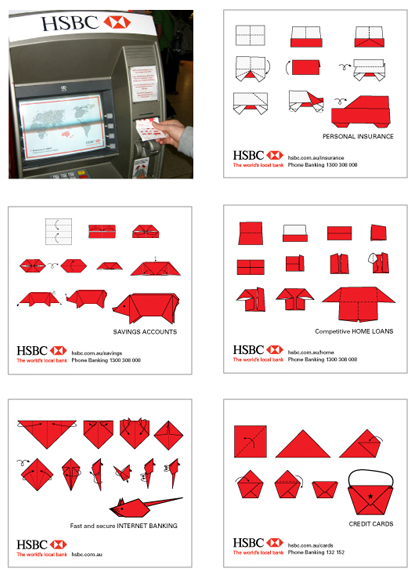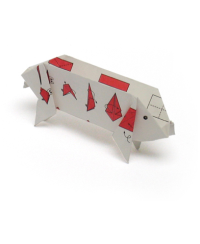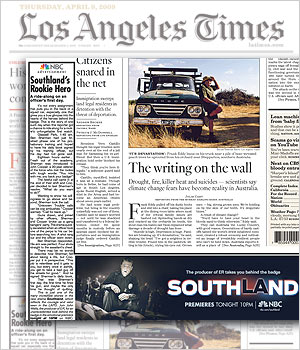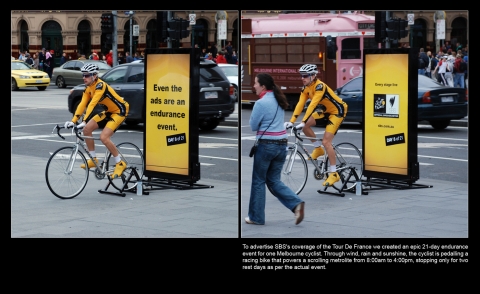
 Entry in English
Entry in English
Kiedy sądzisz, że nic nie jest już w stanie Ciebie zaskoczyć, zdarza się właśnie coś takiego. Bankowość/usługi finansowe to stosunkowo trudny obszar do promocji. Ciężko jest znaleźć nowe sposoby promocji z wykorzystaniem starych narzędzi – w tym przepadku bankomatu. O ile często zdarza się umieszczać informacje promocyjne na ekranie, umocować półkę/wieszak z ulotkami (idealne miejsce do schowania kamery nagrywającej wpisywany PIN… Powinienem zrobić notkę o zabezpieczeniach) to inwencja kończy się zazwyczaj tutaj. Tym bardziej cieszy, kiedy spotka się tak udaną realizację.
Na papierowym potwierdzeniu dokonania wypłaty z bankomatu umieszczono wzory orgiami, umożliwiające złożenie myszy dla wersji z bankowością internetową, torebki dla karty kredytowej, świnki dla konta oszczędnościowego itd. Nie doszukiwałbym się jednak wyrafinowanej personalizacji np. drukowanie wydruku z kontem oszczędnościowym dla osoby nim potencjalnie zainteresowanej. To byłoby zbyt piękne. Podejrzewam, że wzory zostały losowo (lub w takiej same sekwencji) nadrukowane na papierową szpulę umieszczoną w bankomacie – na pewno nie był drukowany przez bankomat.
Dobrym pomysłem było umieszczenie instrukcji składania na wierzchniej stronie potwierdzenia, w połączeniu z czerwonym kolorem (zgodnym z marką HSBC) powoduje, że trudno jest go nie zauważyć.
Za
Wykorzystanie starego środka komunikacji (można tak nazwać bankomat) w zupełnie nowy sposób
Przeciw
?
Możliwe ulepszenie
Zwiększenie prawdopodobieństwa oddziaływania – dodanie informacji o umieszczeniu instrukcji na ekranie, PRZED wybraniem opcji wydruku, np. poprzez słowa ‘mamy dla Ciebie niespodziankę’, ‘nasze zwierzątka czekają na Ciebie’ (ok, co z torebką…) itp. Uniemożliwić przeoczenie tej formy promocji.
W zależności od konstrukcji bankomatu, jak i jego otoczenia, rozłożyć kilka poskładanych układanek wokół/na bankomacie.
Jak zawsze – współpracować z końcowymi odbiorcami, może jakiś konkurs na stronie internetowej na nowe/lepsze projekty orgiami.
Możliwość zastosowania w Polsce:
Jak najbardziej, chociaż po modyfikacji – pomysł z rozłożeniem poskładanych układanek poza bankomatami w oddziałach banku nie udałby się – pogoda, wandale etc.
Ocena: 5,5/6
Niestety nie posiadam dokładniejszych danych (kategoria Oldies –znalezione na dysku) np. co do kraju w którym zrealizowano ten projekt.
—
At the time when you think that there is nothing what can surprise you, it happens… Banking/financial services are a rather hard area to promote. It is difficult to find new ways of a communication with the usage of old tools/vehicles – at this case, a good old ATM/cash machine. We can often see a promotional message placed on the ATM’s screen, or a bunch of paper leaflets on a stand next to it (a great place to hide a miniature camera to record inputted PIN code… I should make a note on the security issues), the creativity usually ends here. That’s why it is even more enjoyable to notice such realization.
On an ATM’s paper cash withdrawal confirmation/receipt origami patterns were placed, which made possible to create a mouse for internet banking version, a handbag for credit card, a piggy for saving account etc. I wouldn’t search here for some advanced personalized marketing, like putting the saving account version on a possibly interested client receipt. It would have been too beautiful. I’m suspecting, that patterns/instructions were placed randomly (or in the specified sequence) on the ATM’s paper reel – for sure they weren’t printed by the ATM printer.
Instructions were located on the top side of the paper confirmation – a very good idea, and in joint with the red color (in accordance with the HSBC brand) makes it hard not to notice it.
Pro
Usage of the old communication vehicle (an ATM can be called so) in a completely new way.
Cons
?
Possible improvement
To increase the impact level and spotting probability – add an information about instructions on the screen, BEFORE choosing the ‘print confirmation’ option i.e. with the words ‘we have a surprise for You’, ‘our pets are waiting for You’ (ok, what with the handbag…) etc. This will make missing them impossible.
Depending on the ATM construction, or the surrounding environment, place some solved origami puzzles around/on the cash machine, to attract attention.
As always – work with your clients, involve them. Maybe a contest on a website for a new/better origami projects?
Implementation in Poland:
Indeed it can be, but with small modifications, like the idea of placing solved puzzles around the machine will rather not work in the case of ATMs located outside bank branches – weather conditions, vandals etc.
Evaluation: 5,5/6
Unfortunately I do not have more specific data, like the country where project was realized, as this entry is from the Oldies category.
EDIT: Ha, I’ve found the original source in my RSS collection, so credits go to the Guerrilla Marketing defined , and division responsible was HSBC Australia.
Tagi: Ambient, In ENGLISH, Marketing, Oldies, POLSKIE wpisy. Autor: Jan Habza
Komentarze (0) »


 I’m not a big fan of non-direct promotional strategies. In my recognition, when you’re deciding to promote your product, you do it openly, avoiding cheap tricks – in this case usage of non-conventional marketing vehicle, i.e. placing your ads where receivers are not expecting to see them. It is a matter of treating your potential customers in a honest way. Such strategy has a great potential of backfiring, and turning back against its creators – in this case both involved parties. I have nothing against sponsored articles, but only when they’re placed in the proper section of a credible newspaper, and are also promptly marked. Los Angeles Times has lost somewhere the first condition.
I’m not a big fan of non-direct promotional strategies. In my recognition, when you’re deciding to promote your product, you do it openly, avoiding cheap tricks – in this case usage of non-conventional marketing vehicle, i.e. placing your ads where receivers are not expecting to see them. It is a matter of treating your potential customers in a honest way. Such strategy has a great potential of backfiring, and turning back against its creators – in this case both involved parties. I have nothing against sponsored articles, but only when they’re placed in the proper section of a credible newspaper, and are also promptly marked. Los Angeles Times has lost somewhere the first condition.